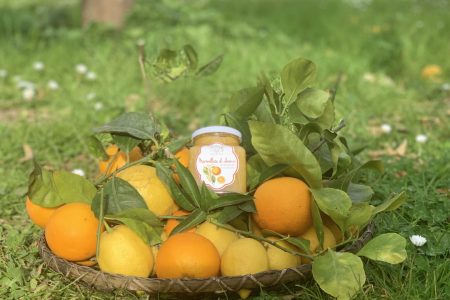Table of Contents
Throughout Italy, in addition to being a classic flavor of ice cream, the lemon has always been the star of fresh granitas and unforgettable liqueurs. However, there are areas where there is a long tradition of its processing and cultivation.
When people think of citrus fruits, a category to which the lemon also belongs, they often think of the land of citrus fruits par excellence, namely Sicily.
Good, juicy lemons of Italy do not grow only on this sunny, laughing island. Noteworthy Italian lemons include, in addition to those from Syracuse, the famous Sorrento lemons , the sfusato of the Amalfi Coast, the fragrant lemons of the island of Ischia and those that in northern Italy grow in the Lake Garda area .
"The world is beautiful because it is varied," and the same story applies to the lemon.
From Sicily to Garda, via Sorrento and Ischia, lemons are at our disposal to bring a touch of freshness to the sultriest of days.
They are the basis of the world's most famous liquor: the Limoncello . What in the home is often boasted of by Neapolitans who offer it to their guests as the most precious of gifts. Prepared by macerating lemon peels in alcohol and diluting in water and sugar, it is an excellent end to a meal.
Campanian lemons in Sorrento
The famous lemon of the sorrentine peninsula is one of the renowned typical products of the coast whose PGI mark is also recognized.
This is the cultivar "limone femminello" with peculiar organoleptic characteristics and precise cultivation method.
Also called the "Oval of Sorrento" because of its typical ovoid shape, this fruit was cultivated in the Sorrento area in ancient times. Witnessing this was the discovery of documents dating back to the 1500s.
However given the great appreciation this fruit had found among the people of the Romans, a cultivation even earlier than that described in the above historical documentation cannot be ruled out. In any case, the first and oldest Sorrentine estate, cultivated as a lemon grove, is "Il Gesus." This, still existing today, is located in the municipality of Massa Lubrense, and was planted by the local Jesuit fathers in 1600.
The particular cultivation technique that makes this fruit so unique and different from others lies in the use of "strawbeds." Originally these were special installations with wooden poles and thatched roofs that served to create a partial shade area over the crops.
In this way the trees were protected from wind and possible frosts while the fruit delayed in ripening. Today Sorrento lemons are widely used as a condiment in cooking but not only. Typical of this area is a very special lemon coffee while the liqueur that par excellence is part of the Italian culinary tradition is made from these very fruits: the fragrant and sweet Sorrento limoncello.
You might be interested
Fullday boat tour of the island of Capri with a choice of stops by sea, land and limoncello tasting departing from Sorrento
per person Book
Cooking classes at the Limonaia in Sorrento
per person Book
Syracuse Lemons
The Syracuse Lemon PGI (Protected Geographical Indication), is among the most representative lemons in Italy although it is certainly not the only one. Born in the land of citrus fruits, this fruit is a lemon of the femminello cultivar, very juicy and with high quality essential oils.
A special feature of this lemon is that its tree has as many as three blooms each year: the "first bloom," the next "white" and the last "green".
The fruit is edible in its entirety because its cultivation absolutely prohibits the use of waxes and fungicides before packaging.
The juice and peel of Syracuse lemons are prized and in demand by food companies for making ice cream, candies, liqueurs, jams, various confectionery products and other semi-processed products.
Essential oils, on the other hand, are widely used in the world of cosmetics and perfumery.
Lemons and oranges are donated during the patronal feast of Saint Lucy as a sign of devotion to the city's patroness.
The Amalfi Coast Lemon.
The Amalfi Coast Lemon, commonly called the Sfusato Amalfitano (Limon Amalphitanus) is also a PGI product. This differs from Sorrento lemons in the very characteristics of the fruit and cultivation. These lemons are always part of the femminello cultivar but belongs to the sfusato category.
Richer in pulp and vitamin C, it saw the spread of its cultivation along the Amalfi Coast between 1400 and 1800 when its medicinal properties in fighting scurvy were discovered. In the 11th century, it was the Republic of Amalfi that decreed that ships should always be stocked with these fruits.
Today, the sfusato lemon is eaten fresh or used as a condiment or in the preparation of desserts and cakes.
The uniqueness of these fruits comes from a territorial peculiarity: the soils on which they are born are exposed to the warm southern winds and protected, thanks to the presence of the Lattari Mountains, from the northern tramontana, the typical cold wind from northern countries.
Lemons on the island of Ischia: among the uses here is the most "fascinating" one
The island of Ischia, close to the Neapolitan coast, is a volcanic land that in Spring is colored by the fragrant lemon fruits that grow on the trees of Ischia's citrus groves. Its territory, due to the presence of its numerous thermal waters and mud baths, makes Ischia the island of well-being par excellence. Thus this fruit, known and much appreciated by the ancient Romans, also benefits from aesthetic properties.
Among the benefits of lemon known very well on the''Island, we count not only its healing and lightening power, but also peculiarities such as stimulation for the formation of new epithelial cells and the aptitude to actively fight skin aging. For this reason, on Ischia, a particular use of this fruit is widespread: peeling with salt, oil and fresh lemons, indicated after spa treatments to make the skin smooth and soft.
Historic lemons of Riva del Garda
The limoncello most famous abroad, besides the one made from Sorrento lemons, is the one made from lemons from Lake Garda.
To Riva del Garda, this splendid fruit was brought during the 13th century by the friars of St. Francis of Gargnano. These, taking lemons from nearby Liguria, began to build the large and historic lemon houses that still characterize the area today. These were greenhouses that allowed the production of lemons (along with citrons and oranges) at any time of the year, which could thus be widely exported to other European states.
Lemon houses were obtained by cleverly installing terraces on nearby mountains, perimetering them with high walls that would defend the plants even from the harsh winter cold. In fact, fir beams were placed on these to provide winter cover. Lemon houses therefore are part of the historical and architectural heritage of Garda, and to safeguard them their structures are often renovated and restored to make them stand the test of time.
Insights and other uses besides gastronomic
The lemon (or Citrus limon) is a citrus plant whose exquisite fruits are, think of it, native to northeastern India. However, they have been appreciated since ancient times and throughout the world for their disinfectant and thirst-quenching properties and for the taste of their juice as well as the unmistakable aroma of its golden peel. Also cultivated in ancient times in China and Mongolia for the preparation of refreshing beverages, lemon fruit appears in depictions from Roman times.
They spread, in fact, to the West around the 8th century and were brought to Liguria and Campania by Crusaders who became acquainted with these plants in the territories of Syria and Palestine. According to other botanists, however, the oldest variety of this fruit is the cultivar called Limone Femminello, which was planted as early as the year 1000 onwards in Apulia, on the coastal territory of Gargano. Renowned as a remedy for scurvy, they were proposed by the Salerno Medical School, as a remedy for various other diseases as well so it became established in the gardens of Campania.
Symbolism in the world and Italy
In India, the homeland for the precious lemon plant, the fruit took on an important symbolic significance. Hindu widows who voluntarily chose to immolate themselves on the funeral pyre where their husband's body burned, traditionally held a lemon fruit in their hands. This was a symbol of love and fidelity. According to ancient Greek myths, in fact, lemons would have been produced by the Earth in honor of the wedding between Juno and Jupiter and kept in the gardens of the Hesperides (the famous golden apples).
In more modern centuries and until a few decades ago, the lemon acquired, by association with the citron, a really relevant symbolic role in some religious rites such as baptisms, confirmations and weddings. Jews used the so-called etrog (Hebrew name by which the citron or more generally the fruits of the genus Citrus was called), during the celebration of Sukkot or Feast of Tabernacles. During this very important Jewish celebration Jewish families would leave for a pilgrimage to Israel that would last a full seven days. In Germany, on the other hand, lemons were brought by celebrant and worshippers during funerals.
Lemon as a pharmacological remedy
One of the oldest existing pharmacological remedies was actually lemon. In ancient times, in fact, lemon juice was used as an antihemorrhagic, anti-diarrheal, hypoglycemic, and disinfectant. Regarding this last characteristic, in fact, it is known that in Sicily, where the water is not entirely drinkable, there was a tradition of putting cut lemons in the water supply to make it healthy.
This fruit is always to be considered refreshing and tonic, bactericidal with antiseptic action as well as useful for various inflammations (such as gingivitis and arthritis), against corns and warts and for lowering blood pressure. Last the lemon was reputed to be indispensable, as well as the only existing equipment, for the terrible disease of sailors: scurvy (caused by vitamin C deficiency). Consider that Portuguese sailors, around the 17th century, brought plants of lemon on the island of St. Helena , making this area the first major treatment station for this dreaded disease.



0 Comments